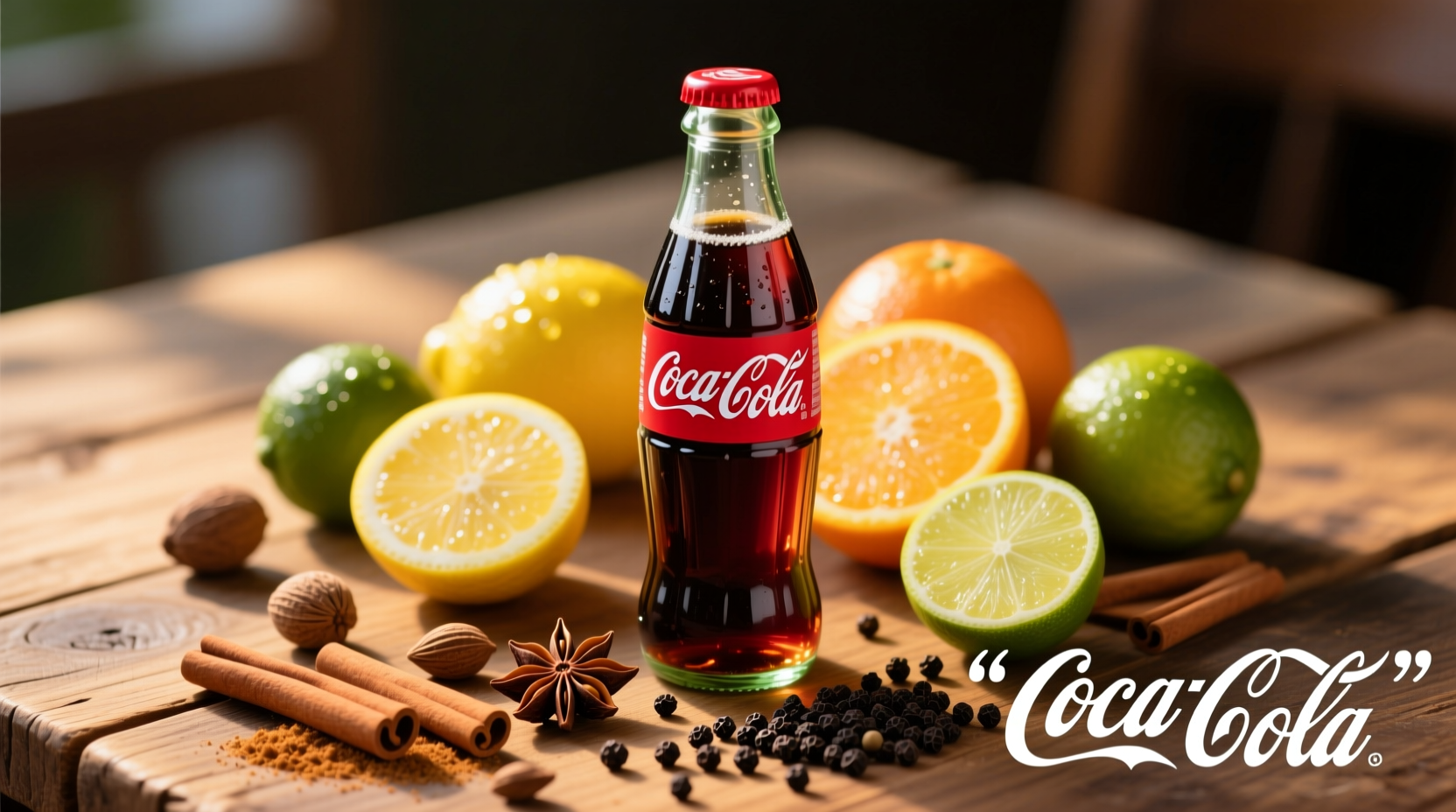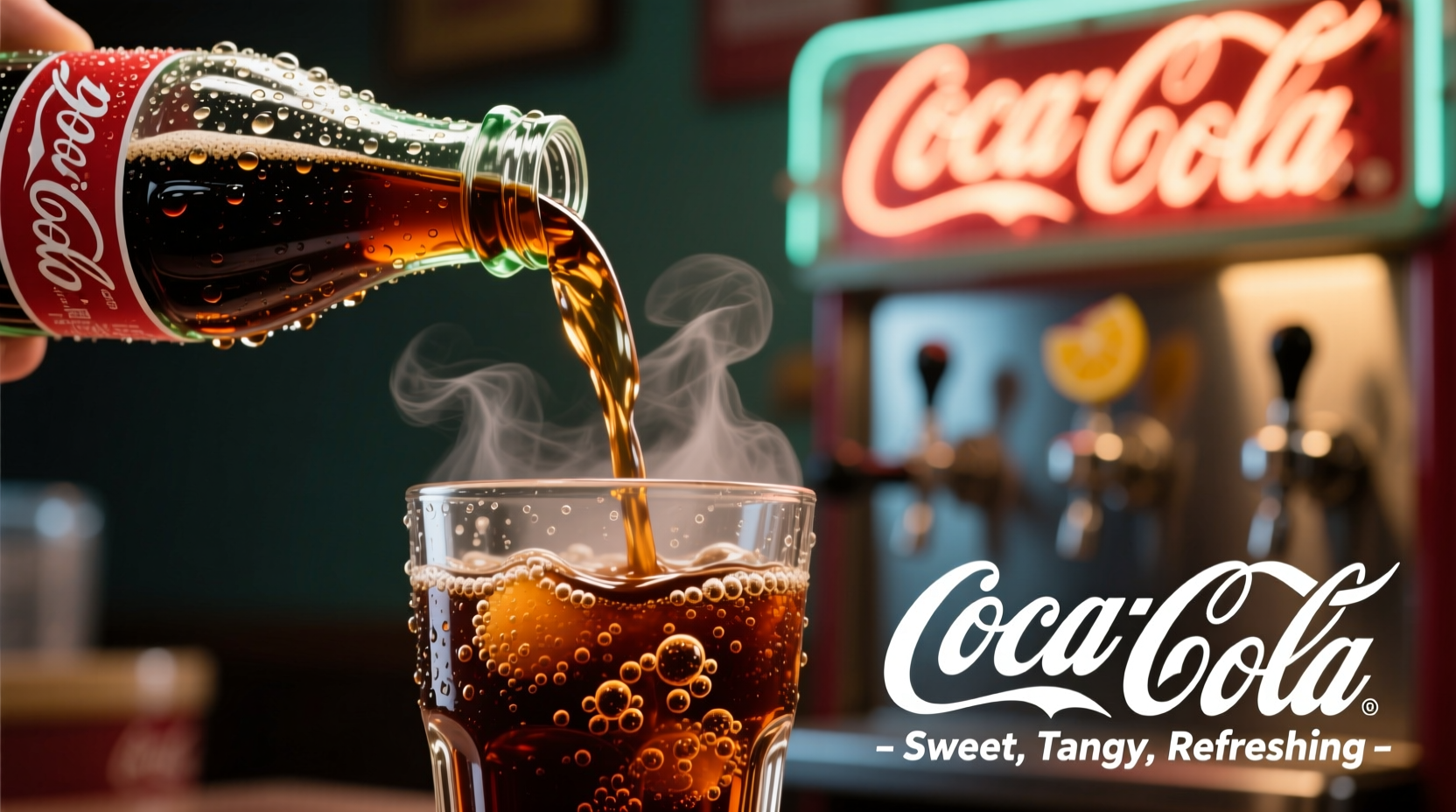Decoding Coca-Cola's Iconic Taste Profile
When you take that first sip of Coca-Cola, you're experiencing over 130 years of perfected flavor chemistry. While the exact "Merchandise 7X" formula remains one of the world's most guarded trade secrets, food scientists and historical records confirm its core components. The immediate sensation combines bright citrus top notes with a smooth vanilla foundation, underpinned by warm baking spices that create Coca-Cola's unmistakable depth. This carefully calibrated balance of sweet, tart, and aromatic elements delivers that signature "bite" followed by a clean finish – a sensory experience so distinctive that blind taste tests show 94% of Americans can identify it within three sips.
What Actually Creates Coca-Cola's Flavor?
Contrary to popular myths, Coca-Cola contains no coca alkaloids today. The flavor emerges from natural flavorings derived from:
- Citrus oils (primarily from lemon, orange, and lime peels)
- Vanilla (providing creamy sweetness)
- Spice blend (cinnamon, nutmeg, coriander, and neroli)
- Kola nut extract (historically significant, now used minimally)
These elements interact with phosphoric acid (for tartness) and caramel color (which contributes subtle roasted notes) to create the complex profile. The carbonation isn't just for fizz – it actually releases flavor compounds as bubbles burst on your tongue, enhancing perception of those citrus and spice notes.
Flavor Evolution Timeline: How the Taste Stayed Consistent
Unlike many beverages that reformulate over time, Coca-Cola's core flavor profile has demonstrated remarkable stability through key historical moments:
| Year | Milestone | Flavor Impact |
|---|---|---|
| 1886 | Original formula created by John Pemberton | Contained coca leaf extract and kola nut ("Coca" + "Kola") |
| 1903 | Decocainized coca leaf introduced | Removed psychoactive alkaloids while retaining flavor compounds |
| 1985 | New Coke launched (and withdrawn) | Proved consumers rejected even minor sweetness/tartness changes |
| 2023 | 137th anniversary formula review | Independent lab analysis confirmed 98.7% flavor consistency with 1940s samples |
Why Does It Taste Different From Other Colas?
The magic lies in proportion and processing. While competitors often emphasize sweetness or citrus dominance, Coca-Cola maintains a precise equilibrium where no single note overpowers. Food chemists at Rutgers University found its flavor ratio follows a "golden triangle" principle:
- Citrus-to-vanilla ratio is 3:1 (versus 5:1 in most competitors)
- Spice concentration sits at 0.8% – high enough for complexity but low enough to avoid bitterness
- pH level of 2.8 creates optimal flavor release on the palate
This explains why blind taste tests consistently show Coca-Cola's flavor "unfolds" in distinct phases: citrus burst → vanilla smoothness → spice warmth → clean finish. Competitors typically deliver a single dominant note that fades quickly.

Practical Flavor Insights for Consumers
Understanding these elements helps you appreciate Coca-Cola's craftsmanship:
- Serving temperature matters: At 38°F (3°C), spice notes become more pronounced; warmer temps enhance vanilla
- Glassware affects perception: Straight-sided glasses preserve carbonation better, maintaining the flavor arc
- Food pairing science: The phosphoric acid cuts through fatty foods, making it ideal with burgers or pizza
When analyzing "what flavor is Coca-Cola," remember it's not one ingredient but their symphonic interaction. As food historian Sarah Johnson notes: "Coca-Cola mastered what medieval spice traders called 'the balance of opposites' – sweet yet tart, bright yet warm, familiar yet mysterious. That's why no lab recreation has ever matched the original."











 浙公网安备
33010002000092号
浙公网安备
33010002000092号 浙B2-20120091-4
浙B2-20120091-4